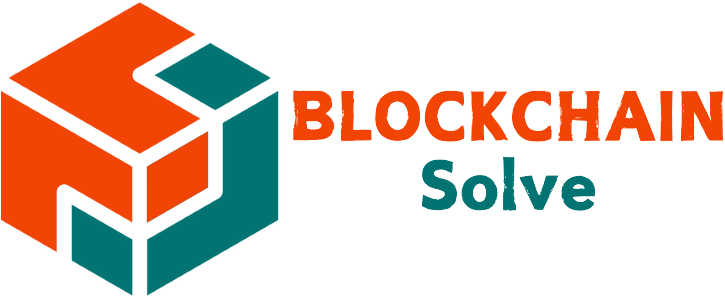As the blockchain industry evolves, so do the technologies that power it. One of the most important innovations is what is proof of stake, a consensus mechanism designed to be more energy-efficient, scalable, and accessible than its predecessor, Proof of Work. This guide explains exactly how it functions, its key benefits, and the challenges it faces, providing a clear understanding of this foundational technology.
How does proof of stake work
Proof of Stake (PoS) is a modern consensus mechanism that secures a blockchain without the massive energy consumption of older systems. Instead of solving complex puzzles, participants, known as validators, lock up their own cryptocurrency as collateral. This process, called staking, grants them the right to verify transactions and create new blocks. The system is designed to be more accessible and environmentally friendly for all users.
The validator selection and reward system
The network selects validators to propose new blocks through a quasi-random process, often favoring those with a larger stake. Think of it as a lottery where each staked coin is a ticket. If chosen, a validator confirms transactions and adds the block to the chain, earning transaction fees and newly created coins as a reward. This incentive is crucial for driving participation and maintaining overall network health.
To ensure honesty, PoS implements a penalty system known as slashing. If a validator approves fraudulent transactions or acts maliciously, they can lose a portion or all of their staked funds. This economic consequence provides a powerful deterrent against attacks, making the network highly secure. It aligns the validator’s financial interests with the integrity of the entire layer 1 blockchain.
Proof of stake vs proof of work

The core difference between Proof of Stake (PoS) and Proof of Work (PoW) is how they achieve network consensus. PoW relies on immense computational power, where miners compete to solve complex puzzles. In contrast, PoS secures the network through an economic stake, where validators lock up capital to earn the right to verify transactions. This fundamental distinction leads to vastly different operational models and impacts on the ecosystem. Understanding these different consensus mechanisms is key to grasping the evolution of blockchain.
| Feature | Proof of Stake (PoS) | Proof of Work (PoW) |
|---|---|---|
| Resource Usage | Minimal energy use, promoting sustainability. | High energy consumption and hardware costs. |
| Participation | Requires owning and staking cryptocurrency. | Requires specialized and expensive mining hardware. |
| Security Model | Economic security; attackers risk losing their stake. | Computational security; attackers need majority hash power. |
| Centralization Risk | Wealth concentration among large stakers. | Domination by large-scale mining pools. |
| Key Examples | Ethereum, Cardano, Solana | Bitcoin, Litecoin, Dogecoin |
Key advantages of proof of stake

Proof of Stake has gained significant traction by offering compelling solutions to the challenges of older consensus mechanisms. Its design provides tangible benefits that make blockchain technology more sustainable, accessible, and efficient. These advantages address critical industry concerns, from environmental impact to the high costs of participation, making it a popular choice for modern networks.
- Superior energy efficiency: This is the most celebrated advantage. PoS networks consume over 99% less energy than their Proof of Work counterparts. Ethereum’s successful transition to PoS, for instance, drastically reduced its carbon footprint, setting a new standard for sustainable blockchain operations.
- Lower barrier to entry: Securing the network does not require expensive, specialized hardware. Instead, users can participate by staking the native cryptocurrency, making it more accessible for a broader audience to become validators and earn rewards.
- Enhanced scalability and performance: PoS systems can often confirm transactions more quickly. Because block creators are selected via an economic and deterministic process rather than a computational race, consensus is reached faster, leading to higher throughput and lower fees.
- Stronger economic security: The security model is built on direct financial incentives. Validators must lock up capital, and any malicious action results in losing their stake. This is a key factor in understanding undefined.
Understanding the risks and criticisms of PoS

Despite its many benefits, Proof of Stake is not without its challenges and criticisms. Understanding these potential drawbacks is crucial for a balanced view of the consensus mechanism and its long-term viability. The most significant concerns revolve around the potential for wealth centralization and the security model of nascent networks, which differ from traditional systems.
Centralization of wealth and power
The most common criticism of PoS is that it can lead to centralization. Since validator selection is tied to the amount of staked currency, wealthy individuals have a higher chance of being chosen to create blocks. They, in turn, earn more rewards, which can be re-staked to compound their influence. This creates a cycle where the rich get richer, potentially giving large stakeholders disproportionate control over the network.
Security vulnerabilities in new networks
A new PoS blockchain with a low-value token can be vulnerable to a takeover. An attacker could acquire a majority of the tokens at a relatively low cost, giving them control in what is known as a undefined. The security of a PoS network is therefore closely tied to its market capitalization. While the theoretical nothing at stake problem also exists, modern protocols have largely addressed this through severe financial penalties known as slashing.
Proof of Stake represents a significant evolution in how blockchain networks achieve consensus. By prioritizing energy efficiency, accessibility, and scalability, it addresses many of the core limitations of Proof of Work. While it introduces new challenges, such as the risk of wealth centralization, ongoing innovation continues to refine its security and fairness. For more in-depth analysis of blockchain technology, explore the resources available at Blockchain Solve.

